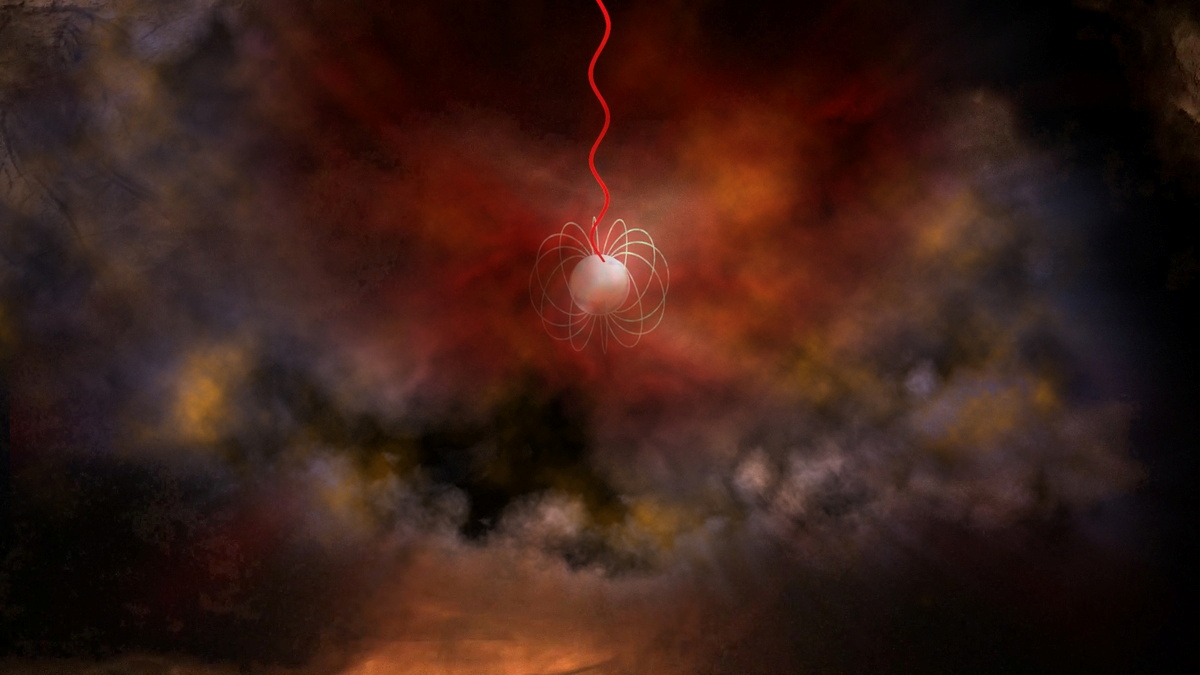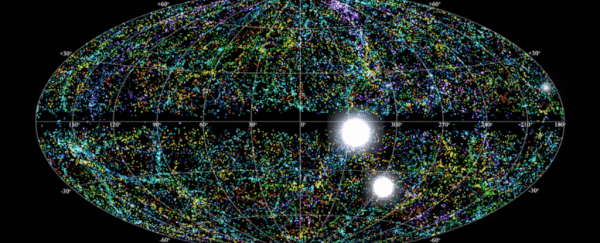Fast radio bursts (FRBs), along with gravitational waves (GWs) and gamma-ray bursts (GRBs), are among the most potent and enigmatic astronomical phenomena occurring today. The bursts that make up these transient phenomena produce more energy in a millisecond than the Sun does in three days.
Even though most bursts endure only a few milliseconds, FRBs have occasionally been discovered to reoccur. The number of incidents that can be studied has significantly grown because to specialized observatories and worldwide collaborations, yet opinions on their causes are still divided.

The Canadian Hydrogen Intensity Mapping Experiment (CHIME), a cutting-edge radio telescope situated at the Dominion Radio Astrophysical Observatory (DRAO) in British Columbia, Canada, is one of the world’s top observatories.
This telescope is an essential tool for finding FRBs (more than 1,000 sources to date! ), thanks to its expansive field of view and wide frequency coverage.
The CHIME/FRB Collaboration discovered 25 new repeating FRBs that were discovered between 2019 and 2021 using a novel algorithm type.

Astronomers and astrophysicists from Canada, the US, Australia, Taiwan, and India are members of the CHIME/FRB Collaboration.
Its partner organizations include the National Radio Astronomy Observatory (NRAO), the Dunlap Institute for Astronomy and Astrophysics (DI), the Perimeter Institute for Theoretical Physics, the Canadian Institute for Theoretical Astrophysics (CITA), the Anton Pannekoek Institute for Astronomy, the National Center for Radio Astrophysics (NCRA), the Institute of Astronomy and Astrophysics, and the Tata Institute of Fundamental Research (TIFR), as well as numerous universities.
Despite their mysterious nature, FRBs are ubiquitous and the best estimates indicate that events arrive at Earth roughly a thousand times a day over the entire sky. None of the theories or models proposed to date can fully explain all the properties of the bursts or the sources.
While some are believed to be caused by neutron stars and black holes (attributable to the high-energy density of their surroundings), others continue to defy classification. Because of this, other theories persist, ranging from pulsars and magnetars to GRBs and extraterrestrial communications
CHIME was originally designed to measure the expansion history of the Universe through the detection of neutral hydrogen.
Roughly 370,000 years after the Big Bang, the Universe was permeated by this gas, and the only photons were either the relic radiation from the Big Bang – the Cosmic Microwave Background (CMB) – or that released by neutral hydrogen atoms.
For this reason, astronomers and cosmologists refer to this period as the ‘Dark Ages’, which ended roughly 1 billion years after the Big Bang as the first stars and galaxies began reionizing neutral hydrogen (the Reionization Era).
Specifically, CHIME was designed to detect the wavelength of light that neutral hydrogen absorbs and emits, known as the 21-centimeter hydrogen line. This way, astronomers could measure how fast the Universe was expanding during the ‘Dark Ages’ and make comparisons to later cosmological eras that are observable.

However, CHIME has now demonstrated that, because to its wide field of vision and the spectrum of frequencies it covers, it is ideally suited for researching FRBs (400 to 800 MHz). The goal of the CHIME/FRB Collaboration is to identify and classify FRBs so that their origins can be determined.
Each FRB’s position in the sky and a number called its Dispersion Measure are used to define it, according to Dunlap Postdoctoral Fellow and primary author Ziggy Pleunis in an interview with Universe Today (DM). This is a reference to the time delay from high to low frequencies brought on by the interactions of the burst with objects in space.
The CHIME/FRB Collaboration produced the first large-sample catalog of FRBs in an article published in August 2021. It contained 536 events discovered by CHIME between 2018 and 2019, including 62 bursts from 18 previously documented repeating sources.
Pleunis and his coworkers used a brand-new clustering method for this most recent study that searches the sky for many events that are nearby each other and have comparable DMs.
“We can measure the fast radio burst’s sky position and dispersion measure up to a certain precision that depends on the design of the telescope that’s being used,” said Pleunis.
“The clustering algorithm considers all fast radio bursts that the CHIME telescope has detected and looks for clusters of FRBs that have consistent sky positions and dispersion measures within the measurement uncertainties. We then do various checks to make sure the bursts in a cluster are really coming from the same source.”
Of the over 1,000 FRBs detected to date, only 29 were identified as repeating in nature. What’s more, virtually all repeating FRBs were found to be repeating in irregular ways. The only exception is FRB 180916, discovered by researchers at CHIME in 2018 (and reported on in 2020) which pulses every 16.35 days.
With the help of this new algorithm, the CHIME/FRB collaboration detected 25 new repeating sources, almost doubling the number available for study. In addition, the team noted some very interesting features that could provide insight into their causes and characteristics. As Pleunis added:
“When we carefully count all our fast radio bursts and the sources that repeat we find that only about 2.6 percent of all fast radio bursts that we discover repeat.
For many of the new sources we have detected only a few bursts, which makes the sources quite inactive. Almost as inactive as the sources that we have only seen once.
“We thus cannot rule out that the sources for which we have so far only seen one burst, will eventually show repeat bursts as well. It is possible that all fast radio burst sources eventually repeat, but that many sources are not very active.
Any explanation for fast radio bursts should be able to explain why some sources are hyperactive while others are mostly quiet.”
These findings could help inform future surveys, which will benefit from next-generation radio telescopes that will become operational in the coming years
These include the Square Kilometer Array Observatory (SKAO), which is expected to gather its first light by 2027. Located in Australia, this 128-dish telescope will be merged with the MeerKAT array in South Africa to create the world’s largest radio telescope.
In the meantime, the prodigious rate at which new FRBs are being detected (including repeating events) could mean that radio astronomers could be close to a breakthrough!








